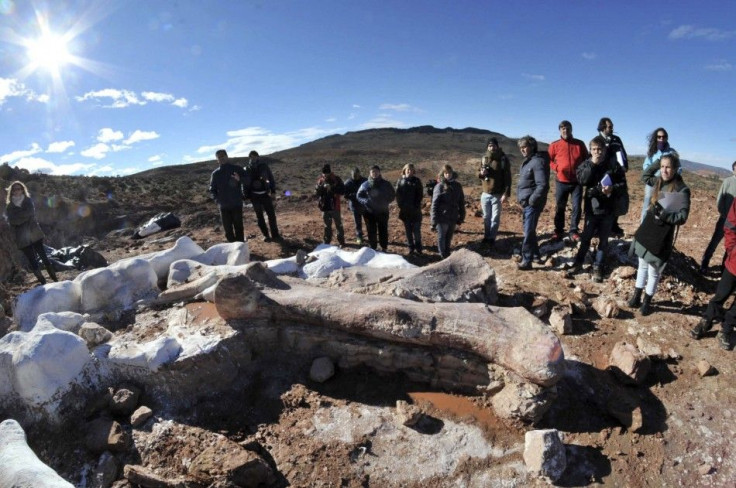Fossilised Mass Grave Of Crocodile-Like Giant 'Monster Salamander' Found In Portugal

A team of scientists has discovered one of the top predators that is believed to have existed 220 million years ago. The fossils of a car-sized giant salamander, with its head similar in shape to that as a toilet seat, was discovered during an excavation of an ancient lake in Southern Portugal.
Scientists believe that thousands of such creatures died in the lake when it dried up, leaving back a pile of bones which is now being discovered by the scientists.
The scientists have claimed that the fossilised salamander, although related to the modern species of the creature, lived more like a crocodile. It snapped fishes from the lake and predated on its rivals at the shore of the lake.
"This new amphibian looks like something out of a bad monster movie. It was as long as a small car and had hundreds of sharp teeth in its big flat head, which kind of looks like a toilet seat when the jaws snap shut," said the lead scientist, Dr Steve Brusatte, from the University of Edinburgh's School of GeoSciences, reported The Economic Times.
"It was the type of fierce predator that the very first dinosaurs had to put up with if they strayed too close to the water, long before the glory days of T Rex and Brachiosaurus," he continued.
The researchers have revealed that the creatures used to live in rivers and lakes during the Triassic period and were a part of a larger group of ancient amphibians. The species of monster salamander, along with hundreds of other creatures, were eliminated 201 million years ago during the mass extinction, years before the extinction of the dinosaurs.
The discovery has been reported in the Journal of Vertebrate Paleontology.
To report a problem or to leave a feedback on the article, send an e-mail to emailtoguneet@gmail.com.





















